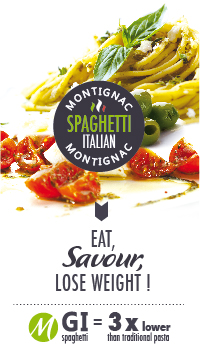The Concept Behind the Montignac Method
The Montignac Method is the fruit of years of research and testing. It is the synthesis of numerous scientific publications dating from the 1980s and the successful results of the tests carried out by Michel Montignac in junction with a varied group of medical doctors and researchers. From a scientific viewpoint, the method is unquestionable. Several papers have been published on the Montignac Method, as for example, Professor Jean Dumesnil’s paper published in November 2001 in the British Journal of Nutrition.
For further information of the scientific premises of the Montignac Method
It is not a diet
The Montignac Method is not a diet in the traditional sense of the word. Dieting is limiting the amount of food consumed, something which can only be done on a short-term basis.
The Montignac Method does not limit the amount of food we eat. It is a balanced way of eating by choosing knowledgeably from each food category: carbohydrates, fats, and proteins. We should choose our food because of its nutritional nature (physical-chemical characteristics) and its potential for keeping our bodies from gaining unnecessary weight, getting diabetes and suffering from the risk of heart failure
Testing and scientific research has shown that, even in individuals already suffering these pathologies, these can be significantly reduced in most cases by following the Montignac Method.
It teaches us eating habits to meet our goals:
The Montignac Method teaches us to adjust our eating habits to fit our goals:
-
To lose weight;
-
To prevent the risk of gaining weight;
-
To prevent type II diabetes;
-
To reduce risks of heart disease.
The two main principles of the Montignac Method:
The first principle is to overcome conditioning arising from misguided messages which tell us that calories are what make us gain weight. This belief, despite its proven failure is unfortunately still widespread and preached by many dieticians.
For further information on the failure of low-calorie diets
The second principle is to eat food that is nutritious, that is to say, chosen by its nutritional value and metabolic potential.
- The best carbohydrates are those with the lowest glycemic indexes.
-
The quality of fat foods depends on the nature of their fatty acids, as follows:
- Polyunsaturated omega 3 acids (fish fat) as well as monounsaturated fatty acids (olive oil) are the best choice.
- Saturated fatty acids (butter, fat meats) are to be avoided.
- Proteins should be chosen on the basis of their (vegetable or animal) origin, depending on how they complement each other and on if they make our bodies react by gaining weight (hyperinsulinism).
For further information on intestinal-absorption physiology
How to apply the Montignac Method
The Montignac Method is divided into two phases.
Phase I: the weight-loss phase.
This phase varies depending on the amount of excess weight to be lost. Apart from choosing fat and protein wisely, this phase consists chiefly of eating the appropriate carbs, namely those with glycemic index ranked at 50 or lower. The goal is to eat meals that do not provoke hikes in blood sugar levels. Choosing our food wisely not only keeps our bodies from stocking fats (lipogenesis), it also activates processes which eliminate stored fats (lipolysis) by burning them as extra energy (thermogenesis).
Phase II: stabilization and prevention phase.
Carbohydrates should always be chosen by their glycemic indexes. In this phase, however, the scope to choose from is wider than in phase I. We can even enhance our ability to choose by applying a new concept, the glycemic outcome (synthesis between glycemic index and pure carbohydrate content) and the blood sugar levels which result from the meals. Under these conditons, we can eat whatever carbohydrate we want, even those with high glycemic indexes.
The Montignac Method might not be the panacea to end all evils but it is currently considered the most promising option to conventional dieting (which has basically gotten us nowhere.)
It’s a scientific method built upon a compendium of studies carried out during the past 20 years. It is also based on results, as testified by the people who have tried it, including the doctors who prescribe it.
Michel Montignac was the first (beginning in the 1990s) to propose the use of glycemic indexes to prevent and reduce obesity. Many other health experts soon followed. The Montignac Method is now part of an international school of thought validated by scientists worldwide. Among others, the prestigious Australian scientist, Professor J .Brand-Miller and the well-known American epidemiologist, Walter Willett.
Thanks to its excellent results and favorable side effects -as shown by scientific studies- the Montignac Method has proven to be an innovative and extremely valuable contribution to solving weight-control problems.(See Professor Dumesnil's scientific paper)
Top of page




